

The vehicle should be clean and cool. There should be no unresolved issues with related components prior to installation.
Always diagnose problems before jumping to conclusions. The tools typically needed are listed below. A ratchet and set of sockets, wrenches, needle-nose pliers, and shop towels. There is no drilling or cutting required for installation of this kit. Average installation time is 1.5 hr. Thoroughly read the instructions and view the illustrations before beginning. If it looks too difficult, it probably is! These instructions are not a replacement for the factory service manual or qualified technician, so proceed at your own risk.  First things first- take inventory, and be sure you have acquired anything that is needed to do the job.  Last things last- if you have questions or need help with the installation, feel free to contact us via email, at help@deyemeracing.com. Fully explain what you're doing, and your question. Include digital pictures if possible. These instructions are also available online, at www.deyemeracing.com/Project_Speedy/PF1CDVDLKT_install.htm. |
|||||||
|
Checklist
Clutch Hard Line, w/ end fittings and protective sleeveCMC to Clutch Line Fitting, w/ o-ring (attached to Clutch Line) Clear rubber hose for bleeding clutch circuit Tools and Supplies
(not included)
|
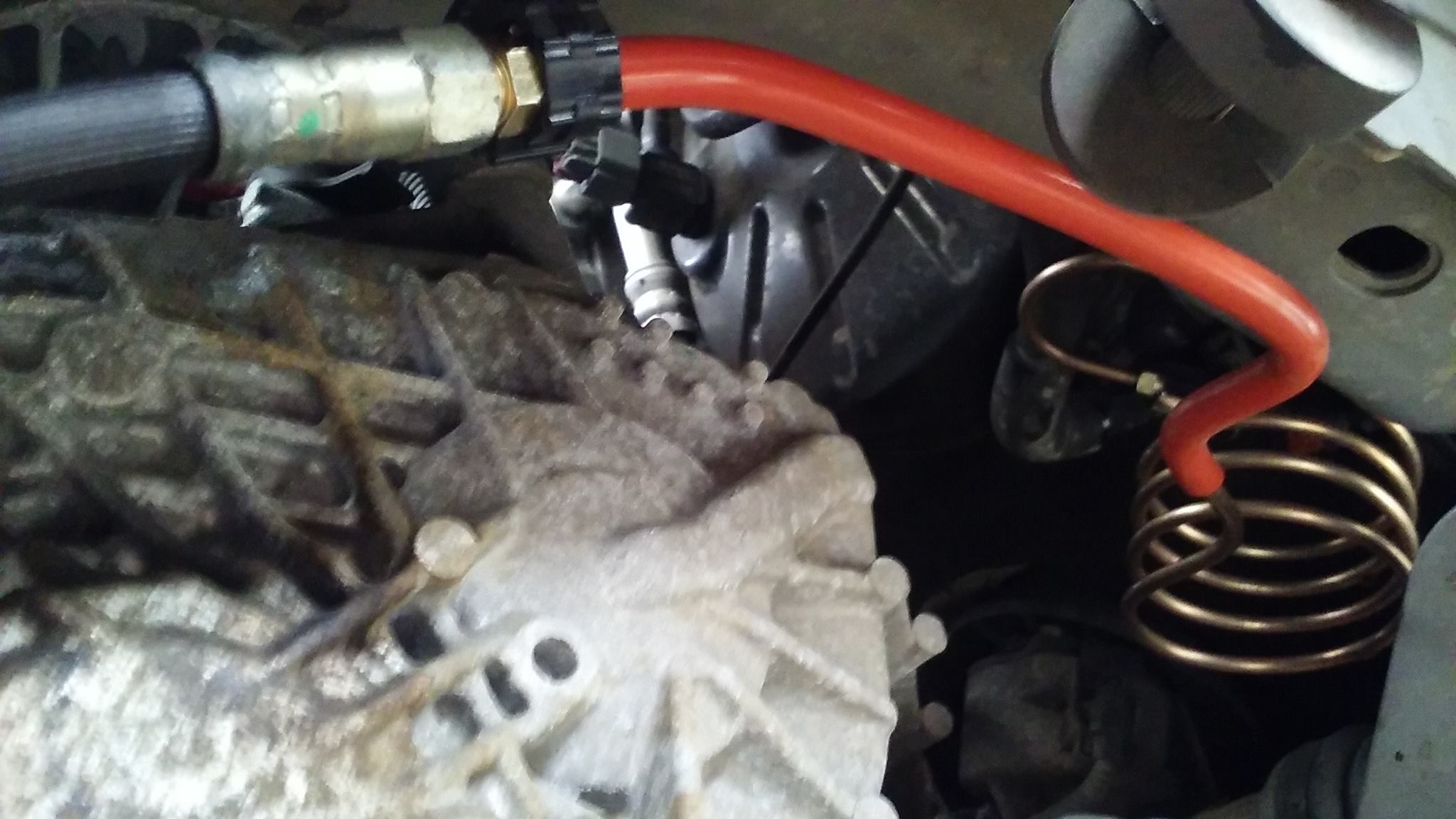
|
||||||
|
Preperation and Precautions
 Be careful to not touch body panels with brake fluid on you or your clothes, as it can damage automotive finishes. Jack the vehicle front driver side for wheel removal. Support the vehicle with suitable jack stands. Never work under a vehicle supported by only a jack! Chock the rear wheels, and set the parking brake. Remove the front left wheel. |
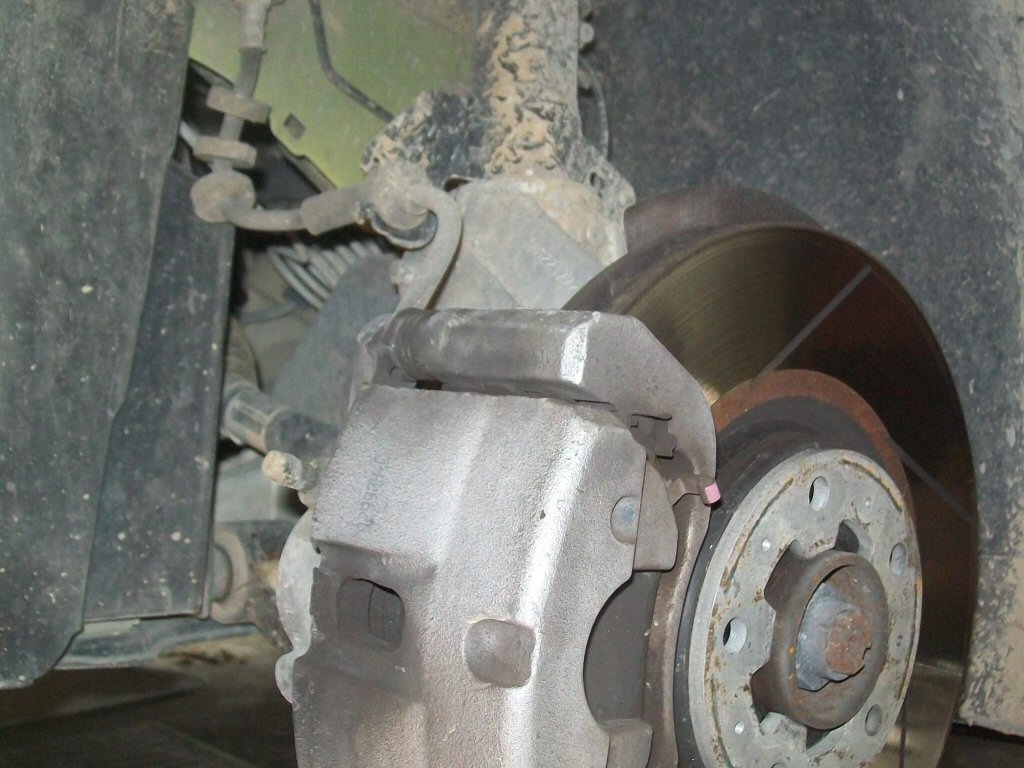 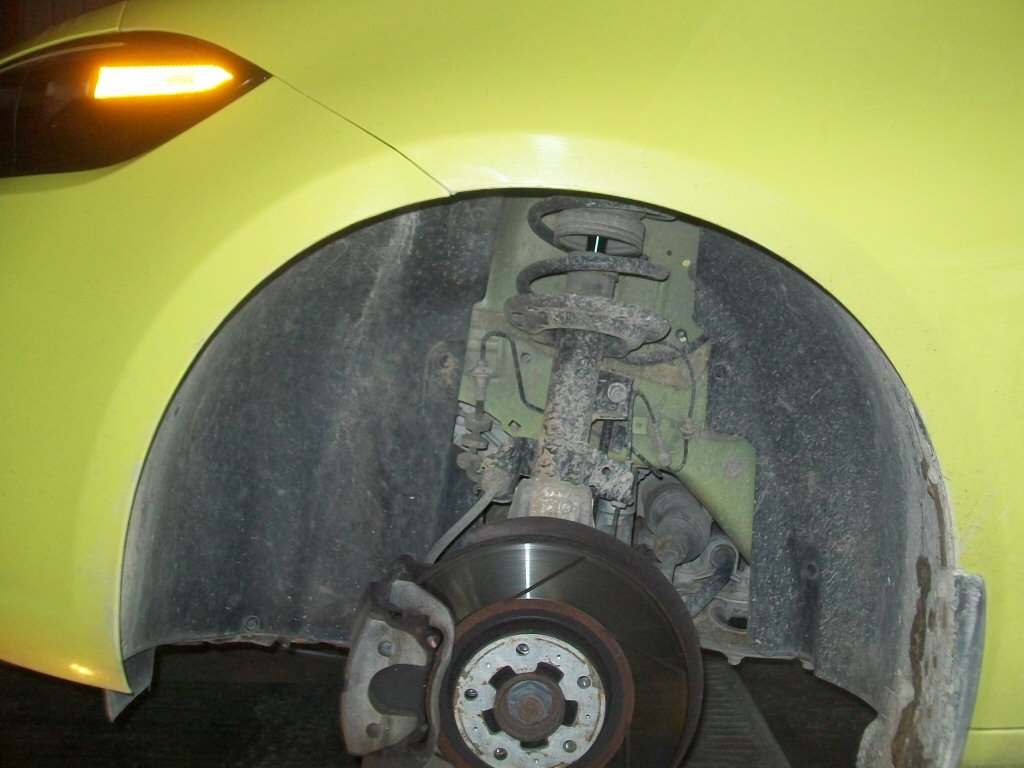
|
||||||
|
Removal
 Remove the screws and push-pins attaching the wheel well liner to the body. On the clutch master cylinder (CMC), pull the metal retaining clip to the "unlock" position with needle-nose pliers or by inserting and twisting a flat-blade screwdriver. Using a pair of wrenches, hold the fitting on the clutch flex line still, and unscrew the tube nut on the metal line side, separating them. Catch any fluid that spills with a suitable container for proper disposal. Carefully pry the CDV fitting straight out of the clutch master cylinder with the hard line attached. Pull downward on the plastic retaining clip holding the hard line to the chassis to disengage it. Unclip the retainer, and move it from the old clutch line to the new one. Remove the old hard line with the CDV attached. |
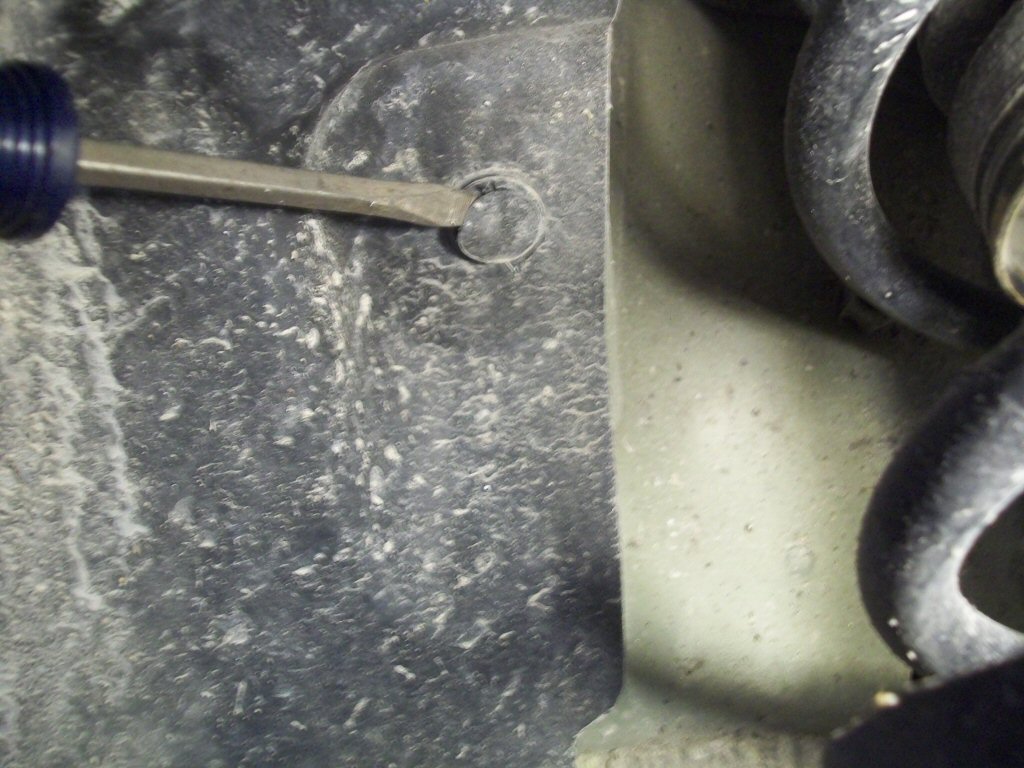 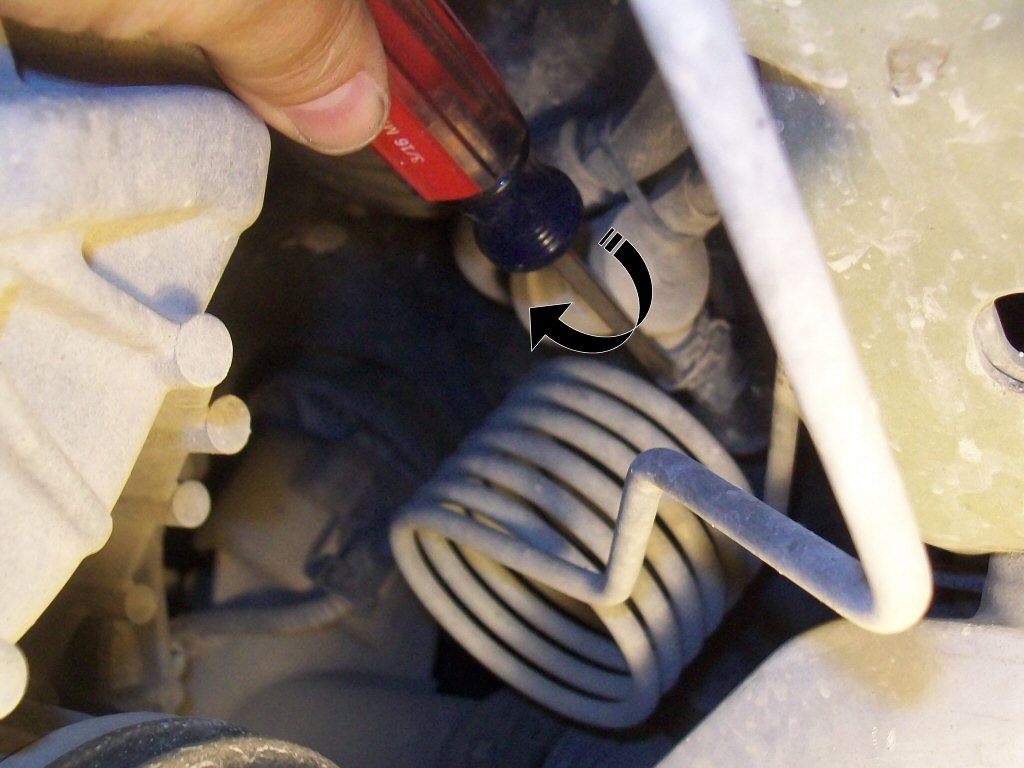 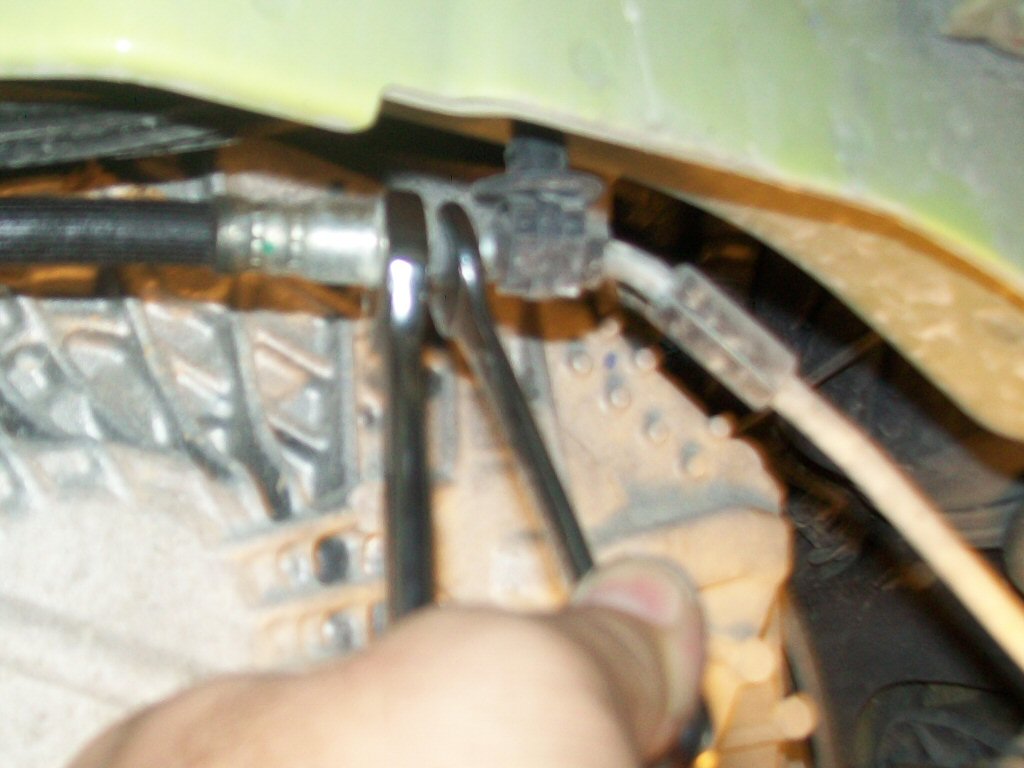 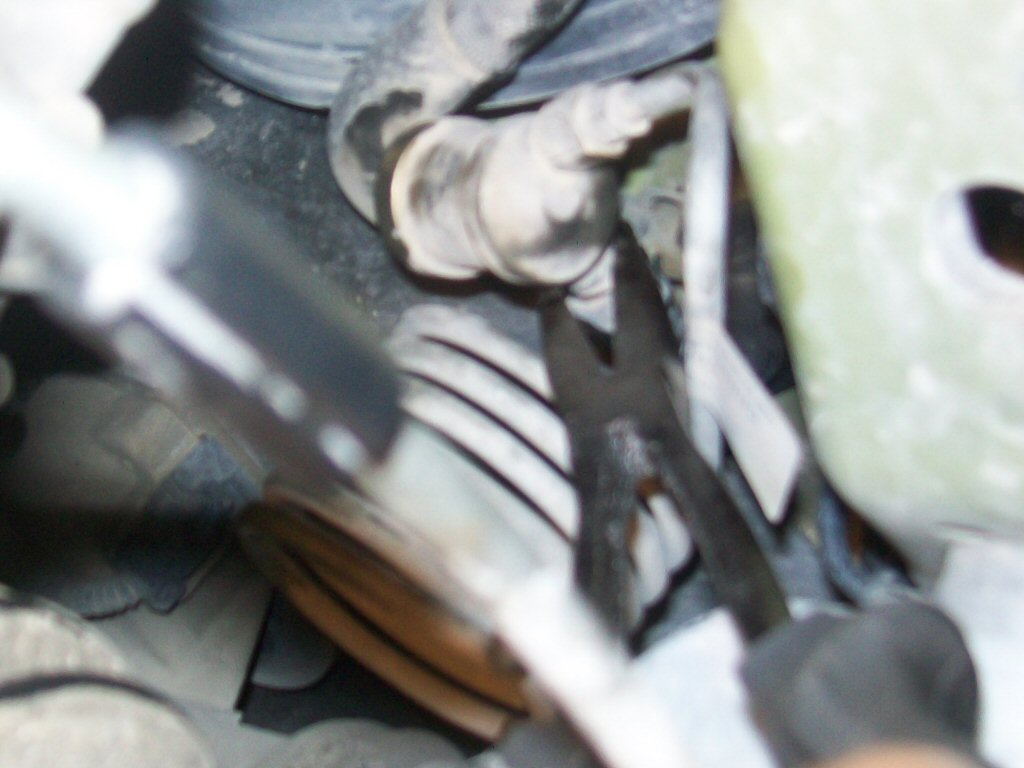 |
||||||